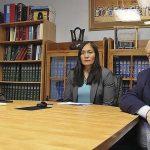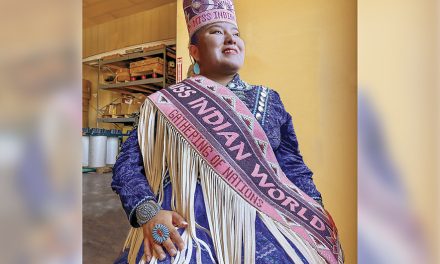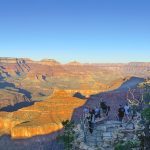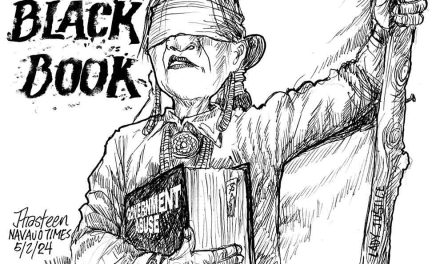
Not forgotten: Navajo Nation resources extend a hand to urban Diné in Bee’eldííldahsinil
ALBUQUERQUE – For retired teacher Maria Saltwater, who struggles with health issues and homelessness, the Navajo Nation Resource Fair was an important gathering that should have happened long ago.
“Every day I live on a fifty-fifty chance,” said a frustrated Saltwater, who has liver issues and left teaching in Chinle 17 years ago. “Right now, we are homeless. My son and I, we went through all the agencies that are here for help, and we’ve been turned down.”
Saltwater explained to the crowd gathered at the resource fair that her frustration was a result of many years of seeking assistance from her Navajo tribal government and getting rejected each time and hearing nonsense excuses.
The Nov. 1 resource fair, which drew a crowd of urban Diné, was organized by the Navajo Division of Social Services in collaboration with First Nations, Albuquerque Public Schools Indian Education, Native Professional Advancement Center, Americans for Indian Opportunity, and Albuquerque’s Office of Native American Affairs.
In the APS Berna Facio Professional Development Center, staff from the Navajo scholarship and financial assistance office, and the vital records office, were set up at tables to share important information and resources with the tribe’s urban population.
Providing a path
For someone like Saltwater, the fair might have provided a path to resolve some of the issues that beset her daily. Originally from Low Mountain, Arizona, she is staying in Pojoaque, New Mexico, with her daughter. For 30 years, Saltwater served as a teacher in the Navajo Nation. Today, Saltwater has liver issues and needs to travel to Albuquerque for her appointments.
On her appointment days, Saltwater takes a bus from Pojoaque to Santa Fe, then boards a train to Albuquerque, and finally takes a bus to the hospital for treatment.
“I try to explain this to different social services, but nothing, they don’t do anything for me,” said Saltwater. “So, right now we’re waiting for the Navajo Nation to do something. It’s hard to live like this.”
Because of Saltwater’s condition, her doctors in Albuquerque said she needed to be living in Albuquerque for her safety.
Mary Descheeny-Reyna, a senior programs and projects specialist in the DSS’s executive director’s office and an event organizer, said the collaboration between DSS and Native American Albuquerque resources came about two months ago.
Thomas Cody, the division director, then started building a service center for Diné in Albuquerque and Phoenix.
“We had just started talking, and this is one of the main things they (Native American Albuquerque resources) had wanted for a long time and was needed here,” said Descheeny-Reyna.
The central departments and people at the resource fair were the Navajo Office of Vital Records and Identification, the Navajo Housing Authority, the Navajo Land Department, the Division of Social Services, and President Buu Nygren, respectively.
“Our goal for the Navajo Nation was to show our services that our Albuquerque Diné relatives would be eligible for,” said Descheeny-Reyna. “And second was to inform them of services they may not be privy to, so they know what services are available for their families at home.”
As Descheeny-Reyna ran throughout the event with other organizers, she also connected with the local community members to address their concerns or help direct them to services that could answer their questions.
‘Holding down the fort’
When President Nygren addressed the room full of kin, he said at the end of the day, the urban Navajos have a CIB, and their grandparents come from Diné Bikéyah, so they deserve access to the resources Diné have in the Navajo Nation.
“There are times you are out here not because you want to be out here,” said Nygren, “but you’re out here because you want to be able to provide for yourself, your family, and relatives.”
In Nygren’s younger days, he spent 15 years in Phoenix. He understood and sympathized with what the urban Navajos were going through, missing home when things got tough in the city or wishing there was assistance.
Before Nygren stepped off the stage, he wanted to ensure the Navajo homeowners in the crowd that the homeowners’ assistance funding that was given to the Navajo Nation by the federal government, which some fear could be rescinded, is an entitlement that he and his administration are fighting vigilantly to preserve.
In September, Nygren signed a sub-grant agreement with Native Capital, which now manages the $55 million funding for the homeowner’s assistance and has a deadline of two years to use the money.
Nygren’s challenge to Native Capital is to use the money within a year to ensure the Navajo people get their money as soon as possible.
Nygren thanked the tribal government employees who were part of the event because, as their “boss,” he said he knows they have the heart to be in their current positions to help the Navajo people.
“I think about you guys all the time,” said Nygren. “You guys are holding down the fort for thousands of Navajos out here in Albuquerque.”
Diné like Maria Saltwater.
To read the full article, pick up your copy of the Navajo Times at your nearest newsstand Thursday mornings!
Are you a digital subscriber? Read the most recent three weeks of stories by logging in to your online account.








 Highway 264,
Highway 264, I-40, WB @ Winslow
I-40, WB @ Winslow